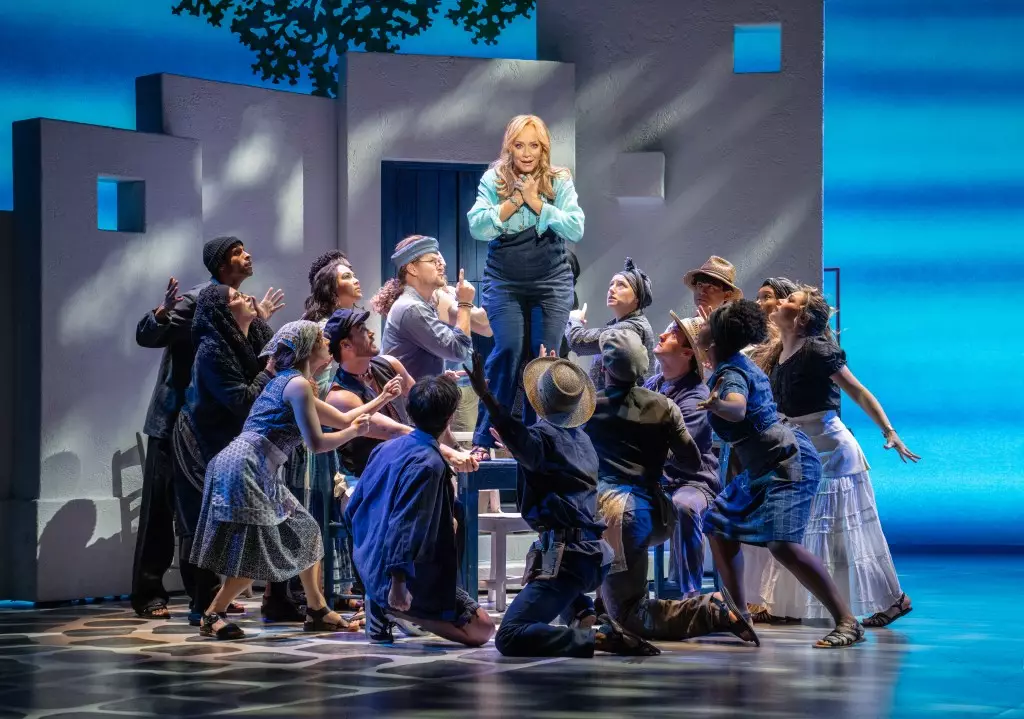Broadway, an enduring symbol of cultural vitality and economic vitality, continues to demonstrate resilience amidst a sea of fluctuating fortunes. While most productions face dwindling audiences and shrinking revenues during the oppressive summer months, the excitement surrounding new shows like *Mamma Mia!* reveals a nuanced truth: nostalgia and marquee appeal still command substantial attention. This paradoxical situation exposes a broader truth about the entertainment industry’s capacity to adapt and recalibrate in times of uncertainty.
The fact that *Mamma Mia!* opened with a sold-out preview at the Winter Garden Theatre signals a strategic boost to Broadway’s vitality. Its limited yet highly profitable run, facilitated by a well-known musical with a built-in fan base, highlights how theater can leverage legacy properties for immediate financial gains. Such moves reflect a pragmatic approach: capitalizing on familiarity while navigating an unpredictable market. This strategy underscores Broadway’s cyclical nature, relying heavily on established hits during downturns but also leaving room for fresh interpretations that reconnect audiences with timeless stories.
Economic Realities and Ticket Pricing Strategies
Despite the encouraging start for *Mamma Mia!*, the overall picture reveals a complex economic landscape. The industry’s ability to sustain multiple hits hinges on intelligent ticket pricing, targeted marketing, and a keen understanding of audience behavior. Shows like *Just In Time* and *The Outsiders* have surpassed the million-dollar threshold, illustrating that premium pricing and star power still drive profitability. Notably, *Just In Time*’s average ticket price of $231.84 illustrates how producers seek to maximize revenue per seat, especially when attendance figures are volatile.
However, this aggressive pricing model cannot be sustained indefinitely without risking alienation. Broadway’s average ticket price of around $127 signifies a middle ground—luxury for some, affordability for others—but it also reflects the sector’s vulnerability to economic shifts. During the dog days of August, even successful shows experience a dip in numbers, emphasizing that audience loyalty remains tenuous. This market reality demands innovative strategies beyond simple ticket sales—such as dynamic pricing, targeted promotions, and diversified programming—to shield the industry from prolonged downturns.
Resilience Versus Overexposure
One cannot ignore the paradox facing Broadway: a handful of shows—*Wicked*, *Hamilton*, and *The Lion King*—continue to dominate the financial landscape, pulling in hundreds of thousands of dollars weekly. These blockbusters are the backbone of the theater’s economic backbone, keeping overall grosses afloat despite the struggles of newer or niche productions. Their immense popularity underscores that strong branding and proven content still carry disproportionate weight in a competitive marketplace.
Yet, reliance on a few mega-hits raises questions about overexposure and long-term viability. Will these be enough to sustain Broadway’s broader ecosystem, or does it risk creating a bubble of dependency? Peripheral productions like *Call Me Izzy* and *Gypsy*—which struggle at partial capacities—highlight the lingering fragility of the mid-tier market. The industry’s future depends on balancing these blockbuster assets with bold new works that challenge audiences and diversify the cultural portfolio.
Broadway’s modest decline—about 4-5% in gross and attendance—should not be dismissed as mere sluggishness but rather as a temporary correction in a resilient industry. The upward trend in year-to-year gross revenue demonstrates that, despite setbacks, the sector still has muscle. Strategic investments in star power, nostalgic revivals, and niche productions become crucial as Broadway navigates the ongoing economic and social shifts.
The current landscape underscores a truth that is often overlooked: Broadway’s strength lies in its ability to adapt. The industry’s capacity to draw audiences back—even when the overall market contracts—is rooted in its appeal to collective nostalgia, star-driven performances, and high-quality productions. While some shows stumble and attendance wanes temporarily, the overall trajectory remains positive, buoyed by strategic revivals and crowd-pleasers that reinforce Broadway’s cultural relevance.
In a broader cultural context, this demonstrates that entertainment—especially in a center of global influence like New York—must evolve to meet the demands of modern audiences without losing sight of its core appeal. The success of *Mamma Mia!*’s comeback, despite broader industry struggles, epitomizes the resilience embedded in Broadway’s DNA. It is a testament to the sector’s capacity not just to survive, but to strategically capitalize on its strengths amid a landscape rife with uncertainties.

